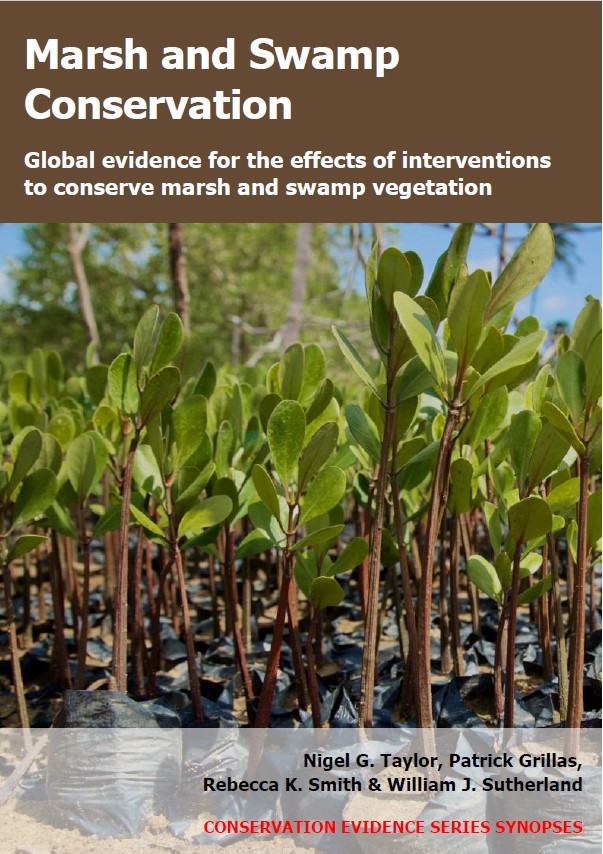Facilitate tidal exchange before/after planting non-woody plants: brackish/saline wetlands
-
Overall effectiveness category Unknown effectiveness (limited evidence)
-
Number of studies: 2
View assessment score
Hide assessment score
How is the evidence assessed?
-
Effectiveness
40% -
Certainty
30% -
Harms
0%
Study locations
Supporting evidence from individual studies
A replicated, controlled study in 1999–2002 in an estuary in California, USA (O’Brien & Zedler 2006) found that excavating tidal creeks before planting salt marsh plants typically had no significant effect on their survival or size. Over the first year after initial planting, dead plants were replaced by new plants of a similar age. The number of replacements needed per plot, and for four of five species, was statistically similar in catchments with or without a tidal creek (data not reported). Over the second year of the study, plot-level survival was statistically similar under both treatments (creek: 3.3; no creek: 2.9 survivors/plot). The survival rate was similar under each treatment for three of five planted species (creek: 24–80%; no creek: 37–70%) but higher in catchments with a creek for the other two species (creek: 63–93%; no creek: 48–74%). Across both years, surviving plants were a similar size (combination of height and lateral extent) in catchments with and without tidal creeks. This was true for both plot- and species-level comparisons (data not reported). Methods: In winter 1999/2000, an area of estuarine sediment was reprofiled to intertidal elevations. A tidal creek was dug in three of six catchments within the site. In December 2000, 90 greenhouse-reared salt marsh plants were planted in each catchment (five plants, each a different species, in each of eighteen 2.24-m2 plots/catchment). Some plots had also been tilled and/or amended with kelp compost. Colonizing vegetation was removed until October 2001. Until December 2001, dead planted vegetation was replaced. Replacements were counted. In August 2002, final survival, height and lateral spread of planted vegetation were recorded.
Study and other actions testedA replicated, controlled study in 1999–2002 in an estuary in California, USA (O’Brien & Zedler 2006) found that excavating tidal creeks before planting California cordgrass Spartina foliosa did not significantly affect cordgrass density or height. After three growing seasons, the density of California cordgrass stems was statistically similar in catchments with or without a tidal creek. The same was true for the average height of those stems. No data were reported. Methods: In winter 1999/2000, twelve 15 x 30 m plots were established during the excavation of a salt marsh. Six plots were within the catchments of three excavated tidal creeks. The other six plots were in three catchments without tidal creeks. Kelp compost was also added to half of the plots. In February 2000, plugs of California cordgrass (range 50–100 cm tall) were dug from a nearby marsh and planted (2 m apart) in the plots. In August 2002, cordgrass stems were counted and measured in four 0.25-m2 quadrats/plot (each with ≥15 stems).
Study and other actions tested
Where has this evidence come from?
List of journals searched by synopsis
All the journals searched for all synopses
This Action forms part of the Action Synopsis:
Marsh and Swamp Conservation
Marsh and Swamp Conservation - Published 2021
Marsh and Swamp Synopsis





)_2023.JPG)














